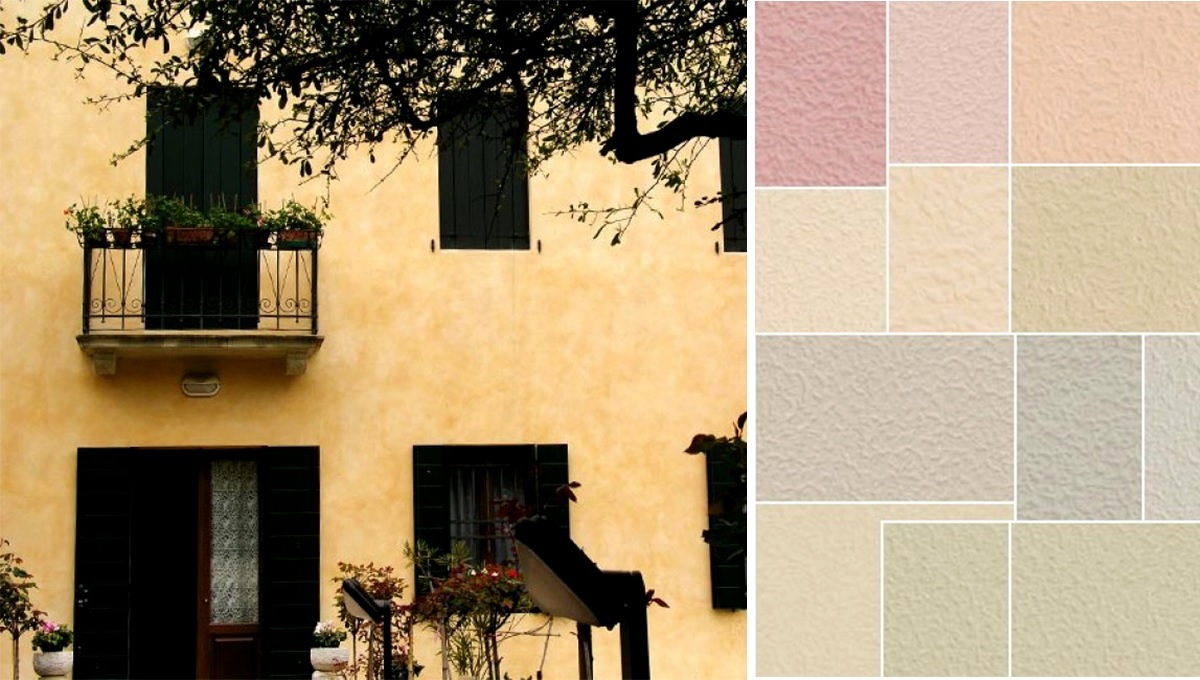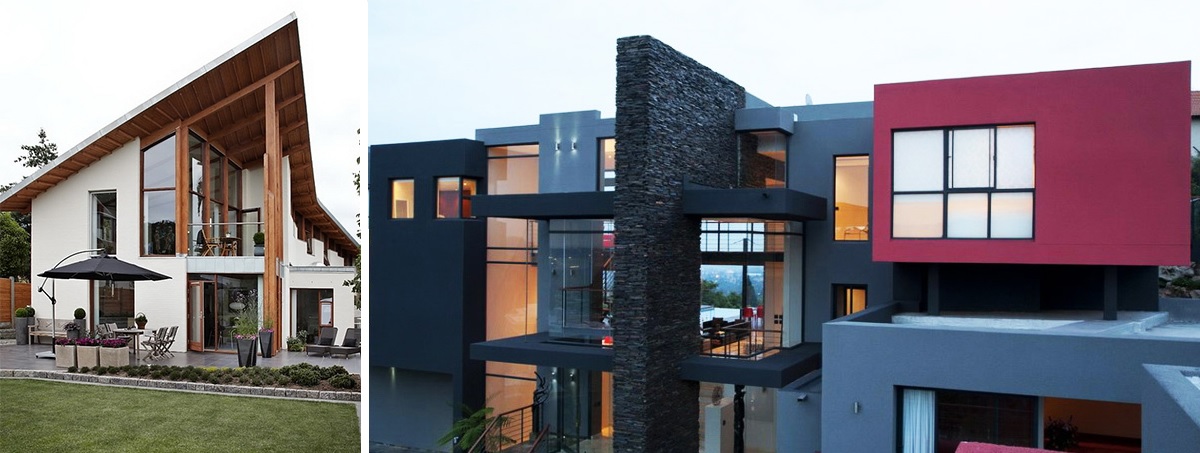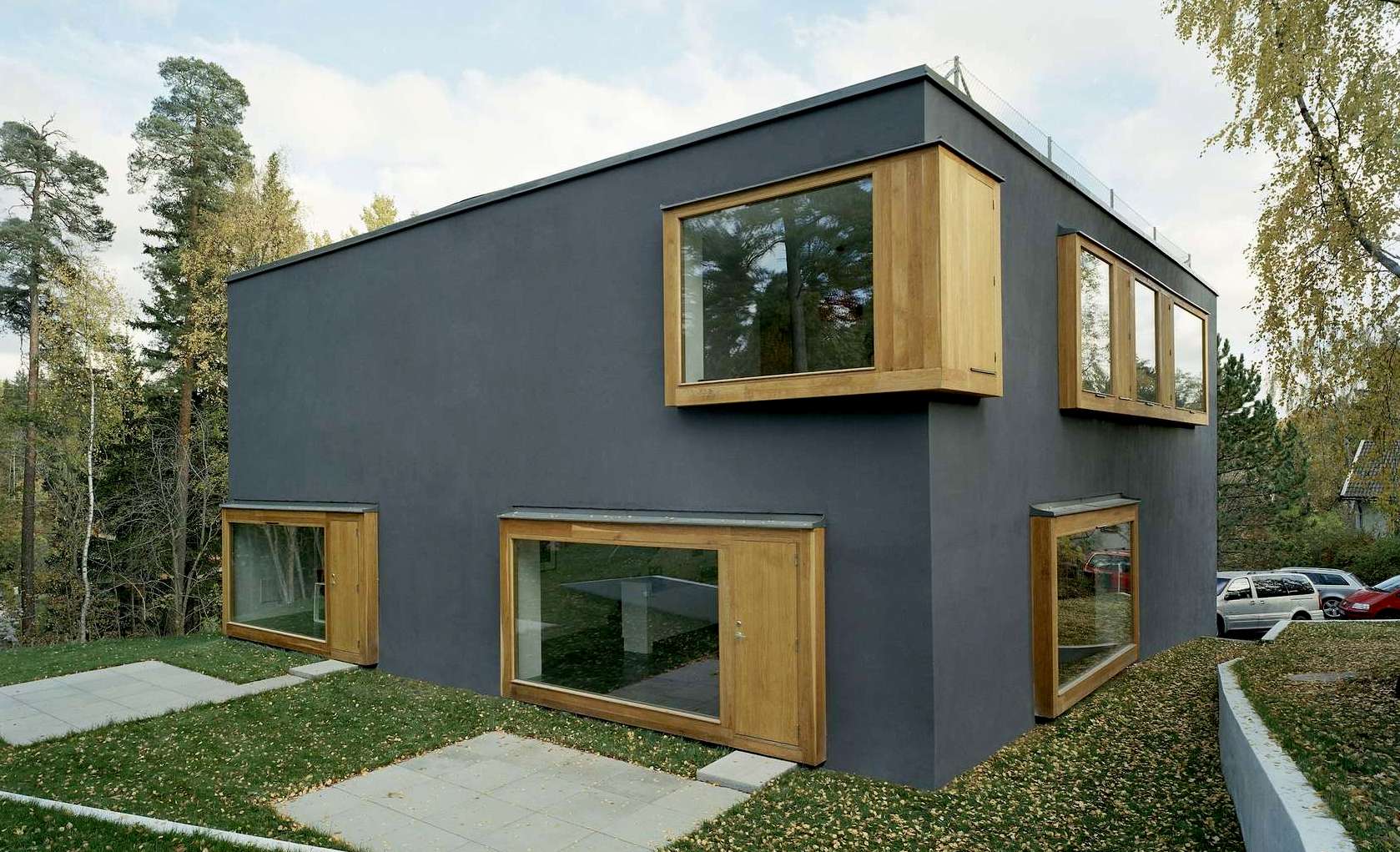The plaster textures of facade finishing layer.
Over the hundreds of years of their existence, plaster mortars used for finishing work on the facade have changed considerably and have acquired a new expressive feature - texture.

STONE PLASTER PROCESSING
Cement mortar with rock crumb allows you to get almost any texture:
- stamped textures are created on freshly plastered and rubbed surfaces using a board patterned with coarse metal wire;
- rough texture without processing is obtained by throwing crumbs of natural stone; after grouting the mortar that has begun to set you get a smooth fine, medium or coarse-grained surface;
- «fine furrow» — the result of scraping over the half-hardened plaster layer;
- «fur texture» — treatment of the hardened covering layer with a bush hammer or tongue-and-groove: a fine-toothed bush-hammer gives a fine-grained «pile», with large teeth - a coarse-grained one, and a tongue-and-groove allows to obtain a «fur coat» with a very coarse grain of «pile»;
- the «dune» and «torn stone» textures — are the result of chipping the hardened mortar with a bush hammer or chisel;
- acid etching gives the same textures in relief, but the plastered and etched surface lasts a very long time.
NB When mixing stone plasters for etching, not pigments are used as coloring agents, but natural aggregates of different colors - marble chips, anthracite, bricks.
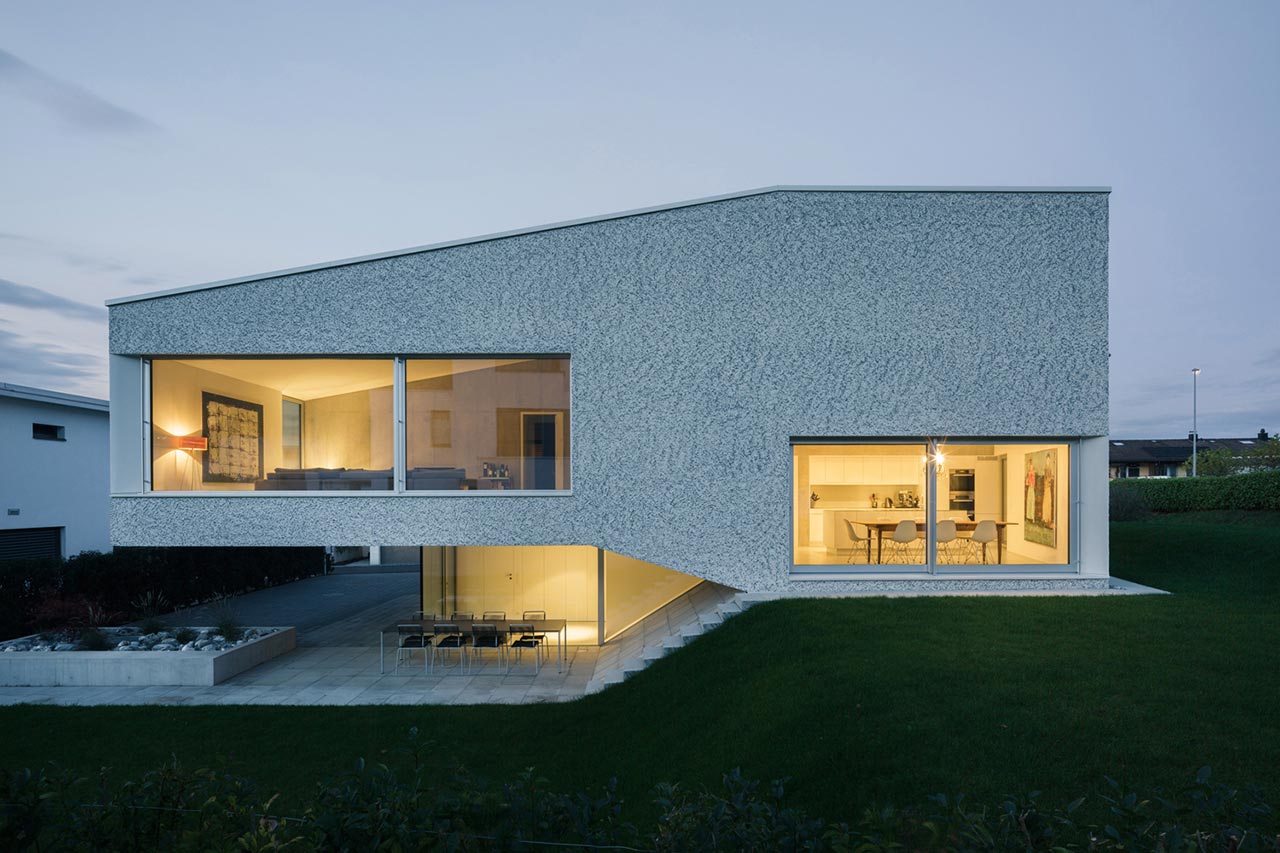
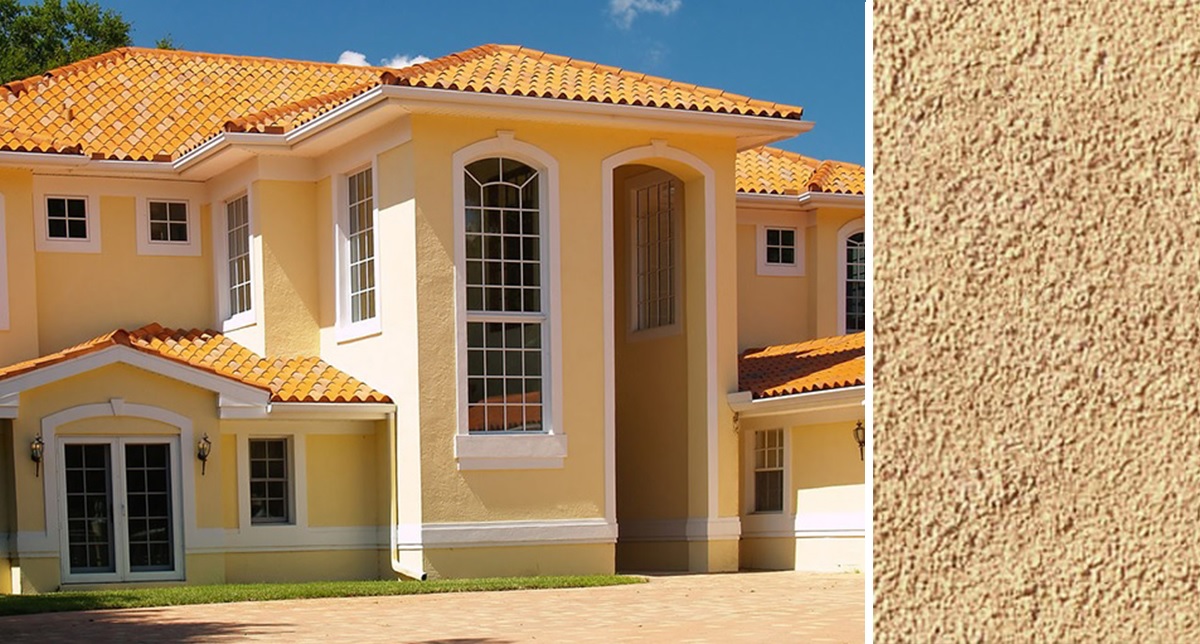
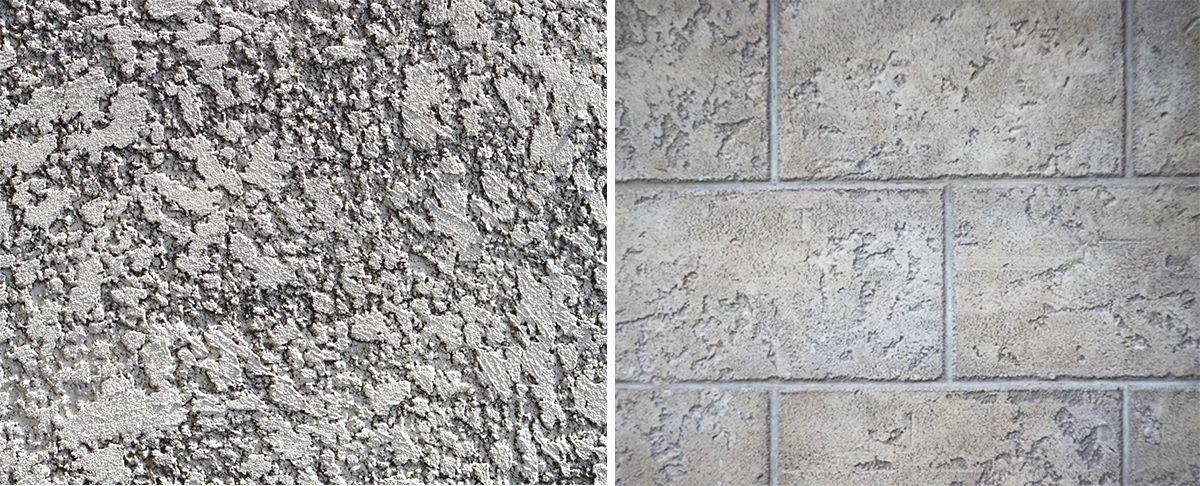

STRUCTURAL PLASTER
Structural plaster is a granular mass with fillers (mineral and stone crumbs, pieces of quartz, an admixture of wood pellets); it can be silicate, mineral and synthetic. Since the mass consists of "grains" of different sizes, the finished texture can be fine- and coarse-grained: the first will look almost flat, while the second will acquire a peculiar textured surface.
The textures given by such mortars are woodworm structure, stone like structure, fur texture.
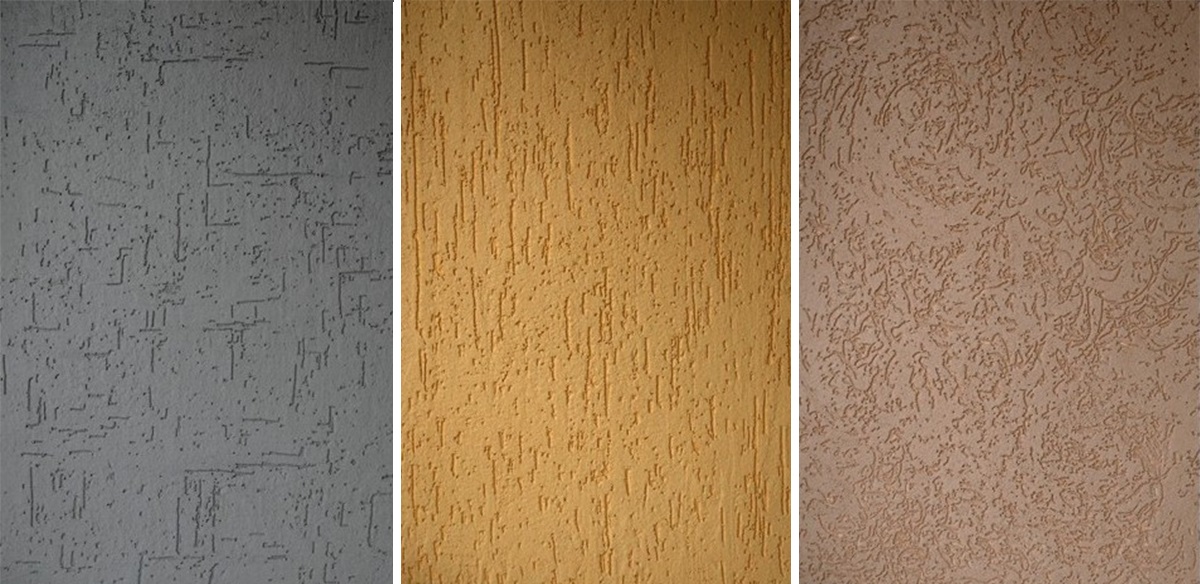
Woodworm structure is the result of troweling a fresh plaster layer with a halftrack. The effect of tracks, gnawed by a bug, is obtained because of the movement of relatively large grains vertically, horizontally or in a circle - so set the direction of the grooves.

The stone like structure has a more homogeneous structure, so it does not retain dust and dirt. The material is grouted in a circular motion and acquires the texture of tightly packed small stones.

Fur texture is applied in an even layer with a trowel, roller or sprayer. The texture pattern is obtained by working on a still wet layer of plaster with a relief roller.
Structural plaster is sold in finished form in metal cans or buckets (15-25 kg); the price starts from $2/kg, the average consumption — 0,35–1,4 kg / m² / mm. The coating withstands temperatures from -58 to +167 °F and allows the wall to "breathe".
Decorative thin-layer plasters
The newest trend in stucco work is the use of high-quality thin-layer plasters that allow you to get both the desired color and texture after troweling. The textures are recognizable:
- uniformly roughened (Edel-structure, stone like structure, goose skin);
- grooved-rough (Rillen-structure, woodworm structure);
- modeling (Roll-structure), allowing you to create an arbitrary pattern.
Rough structure is obtained by evenly spraying or smoothing the decorative plaster. Depending on the filler, the finish is either monochrome or multicoloured. It is even possible to obtain a completely smooth surface, provided that the size of the filler granules is small.
The groovy-rough texture is formed by traces of movement of larger grains, the shape of the grooves is determined by the size and configuration of the granules of the mixture.
In modeling (Roll-structure) a thin layer of applied plaster is outlined (imprinted) with tools - relief roller, toothed trowel, brumes or brushes. The tool used and the motions used to create a pattern make the relief unique.

